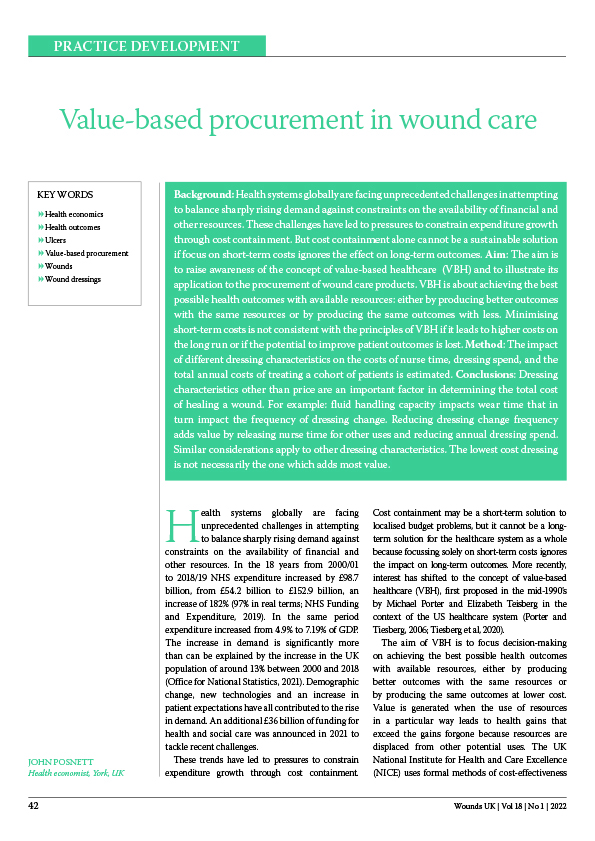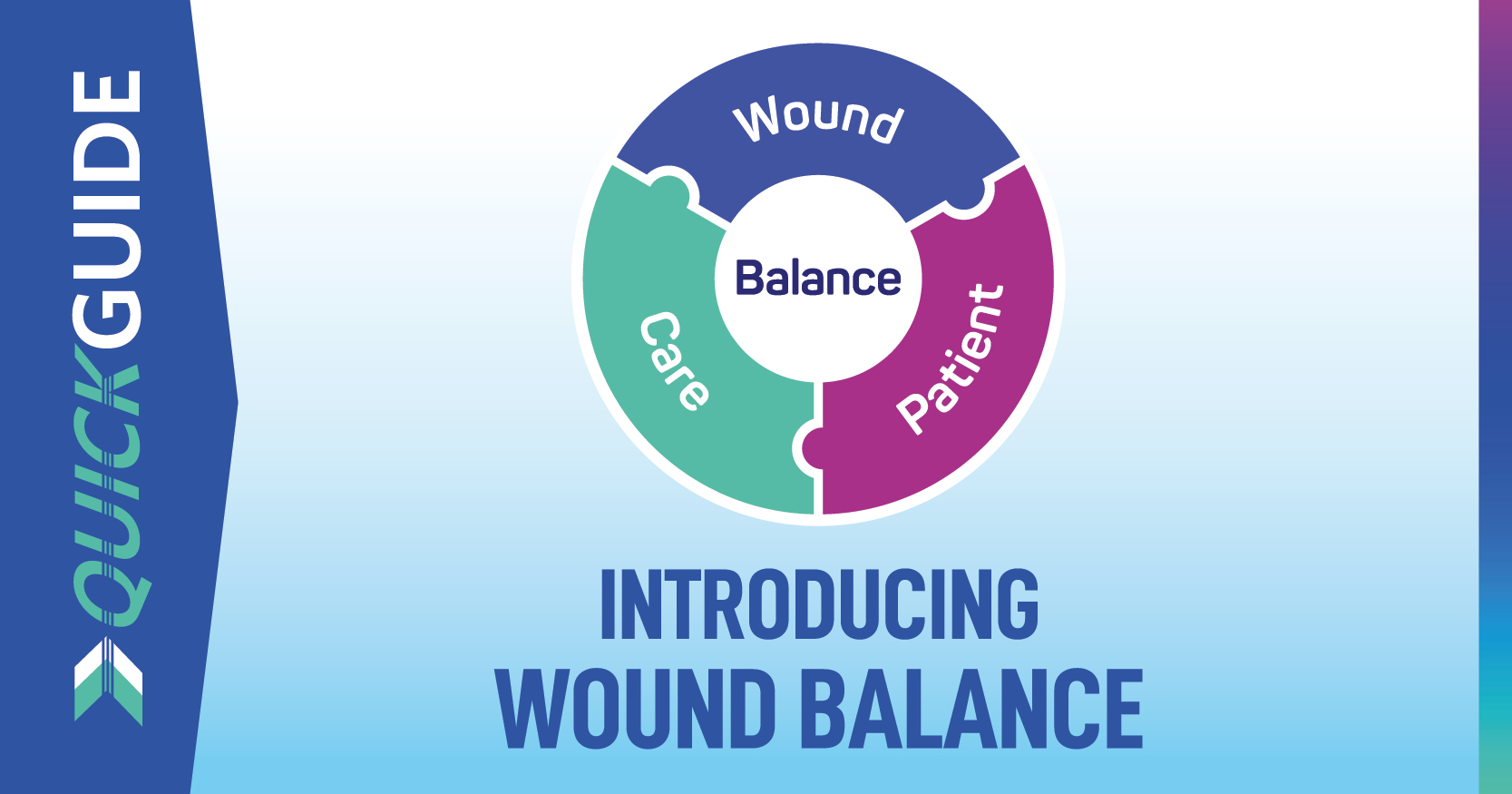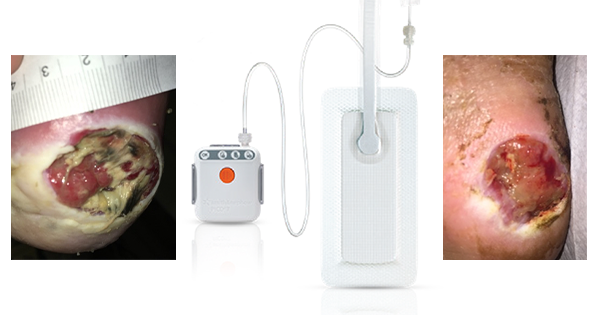Background: Health systems globally are facing unprecedented challenges in attempting to balance sharply rising demand against constraints on the availability of financial and other resources. These challenges have led to pressures to constrain expenditure growth through cost containment. But cost containment alone cannot be a sustainable solution if focus on short-term costs ignores the effect on long-term outcomes. Aim: The aim is to raise awareness of the concept of value-based healthcare (VBH) and to illustrate its application to the procurement of wound care products. VBH is about achieving the best possible health outcomes with available resources: either by producing better outcomes with the same resources or by producing the same outcomes with less. Minimising short-term costs is not consistent with the principles of VBH if it leads to higher costs on the long run or if the potential to improve patient outcomes is lost. Method: The impact of different dressing characteristics on the costs of nurse time, dressing spend, and the total annual costs of treating a cohort of patients is estimated. Conclusions: Dressing characteristics other than price are an important factor in determining the total cost of healing a wound. For example: fluid handling capacity impacts wear time that in turn impact the frequency of dressing change. Reducing dressing change frequency adds value by releasing nurse time for other uses and reducing annual dressing spend. Similar considerations apply to other dressing characteristics. The lowest cost dressing is not necessarily the one which adds most value.







